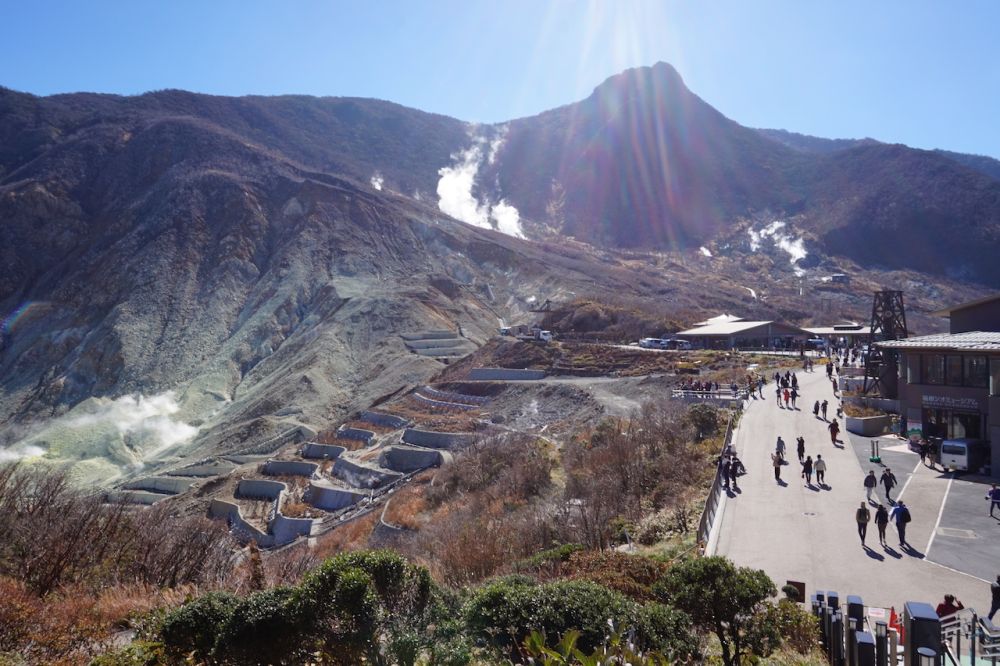

Owakudani, which translates to "Great Boiling Valley," is a volcanic valley with active sulphur vents and hot springs in Hakone, Kanagawa Prefecture, Japan. Formed around 3,000 years ago as a result of the eruption of Mount Hakone, the area is known for its scenic views, volcanic activity, and kuro-tamago — eggs hard-boiled in the hot springs, which are said to extend one's lifespan by seven years.
Initially known as Jigokudani (Hell Valley) due to its harsh environment, Owakudani became a tourist attraction in the Meiji Era (late 19th century), when people began to flock to Hakone for its reputed healing hot springs. The area was later rebranded as Owakudani to encourage tourism and lessen the negative connotations associated with its original name.
In the early 20th century, as travel became more accessible to the general population, Owakudani grew in popularity. The introduction of the Hakone Tozan Railway and the subsequent cable car system, the Hakone Ropeway, allowed even more tourists to visit this steaming wonderland conveniently.
Post-World War II, Japan experienced a tourism boom, with Owakudani becoming a must-visit location for foreign and domestic tourists alike. The appeal extended beyond the valley's natural features to include its proximity to Tokyo, making it an ideal day trip destination.
Today, Owakudani continues to be a major tourist draw in Hakone. Visitors come not only for the sulfurous fumes, hot springs, and volcanic landscapes but also to enjoy hiking trails and the panoramic views of Mount Fuji on clear days.
In terms of the latest trends, there is a growing interest in eco-tourism and sustainable travel practices. Tourists are becoming more conscious of their environmental impact and are looking for experiences that are respectful towards nature. This has led to the promotion of low-impact activities and the preservation of the natural environment around Owakudani.
Another noticeable trend is the rise of experience-based tourism. Travelers are seeking authentic, localized experiences that allow them to engage with the culture and history of the area. This includes enjoying local cuisine, participating in cultural events, and exploring the region's history and geology through guided tours.
Like many popular tourist destinations, Owakudani faces challenges in balancing tourism with conservation. Efforts are being made to protect the area from over-tourism and environmental degradation. Tourist numbers are sometimes restricted to minimize impact, and maintenance is performed regularly on the infrastructure to ensure both safety and preservation.
The area has occasionally been closed to the public due to volcanic activity, emphasizing the need for continual monitoring and respect for the powerful natural forces at work. These closures are a reminder of the importance of sustainable tourism practices and the need to prioritize the protection of Owakudani's unique landscape for future generations to cherish and enjoy.